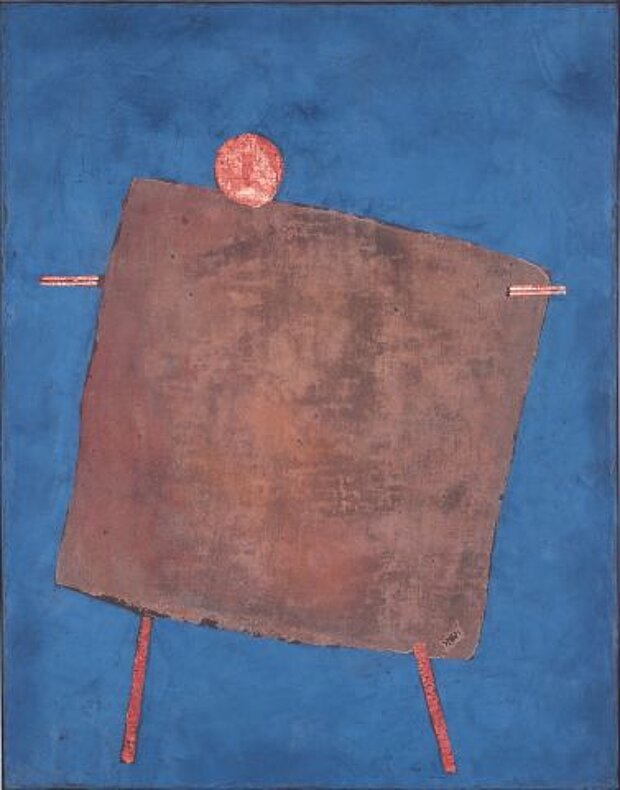
Klee, Paul
Vogelscheuche
Scarecrow
1935

© mumok
| Object description | Mixed media on canvas |
|---|---|
| Object category | painting |
| Material |
Object:
paint
Support:
canvas
|
| Technique |
Object:
mixed technique,
paintings
|
| Dimensions |
frame dimension:
height: 82 cm,
width: 66,5 cm,
depth: 5 cm
object size:
height: 71 cm,
width: 56 cm
object:
weight: 5,65 kg
|
| Year of acquisition | 1969 |
| Inventory number | B 168/0 |
| Creditline | mumok - Museum moderner Kunst Stiftung Ludwig Wien |
| Rights reference | Gemeinfrei | public domain |
| Further information about the person | Klee, Paul [GND] |
| Literature |
SELBSTBESTIMMT ORTLOS Maja Vukoje auf der Kante Museum der Wünsche Genau und anders :Mathematik in der Kunst von Dürer bis Sol LeWitt Laboratorium Moderne/Bildende Kunst, Fotografie und Film im Aufbruch Das Universum Klee Unschuldskomödien. Museum & Psychoanalyse Paul Klee.Leben und Werk Selbstbestimmt Ortlos : [anlässlich der Ausstellung "Selbstbestimmt Ortlos.", Ringturm, Wien, 2020] |
“The Scarecrow” from the year 1935 reflects Paul Klee’s concern with the ideas of the Bauhaus. He taught, amongst other things a course on “Elementary Rules of Surface Composition” there from 1921 to 1931. “The Scarecrow” is one of a series of square pictures that had begun in the 1920s. Klee’s aim is a “new naturalness” in painting in which artistic forms and the experience of nature are unified. Along his path to artistic abstraction he vehemently defends the intuition of artist and the narrative in pictorial mediums against the Bauhaus’ proclaimed central guideline of “art and technology – a new unity”. From about 1932 on the intellectually stimulating and playful qualities of his paintings are superseded by an intense seriousness in his works. Klee often refers very directly to the political situation in his picture titles. He is regarded as a artist who reacted to current events with a clear-cut clarity. He created a series of works that must be read as a commentary on National Socialism. This applies to “The Scarecrow” too, with its dominating brown square.
© mumok – museum moderner kunst stiftung ludwig wien